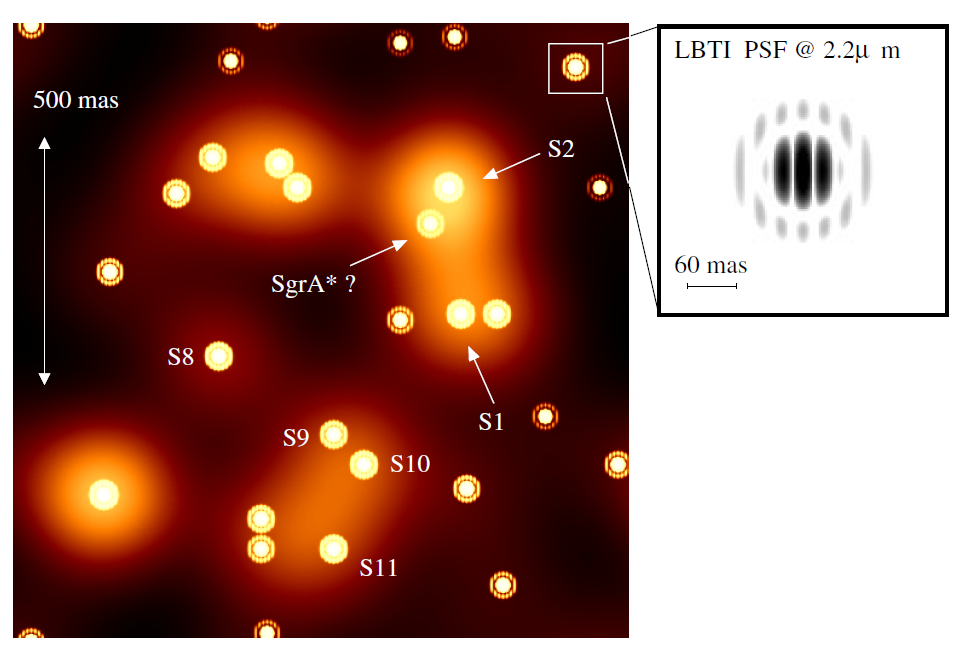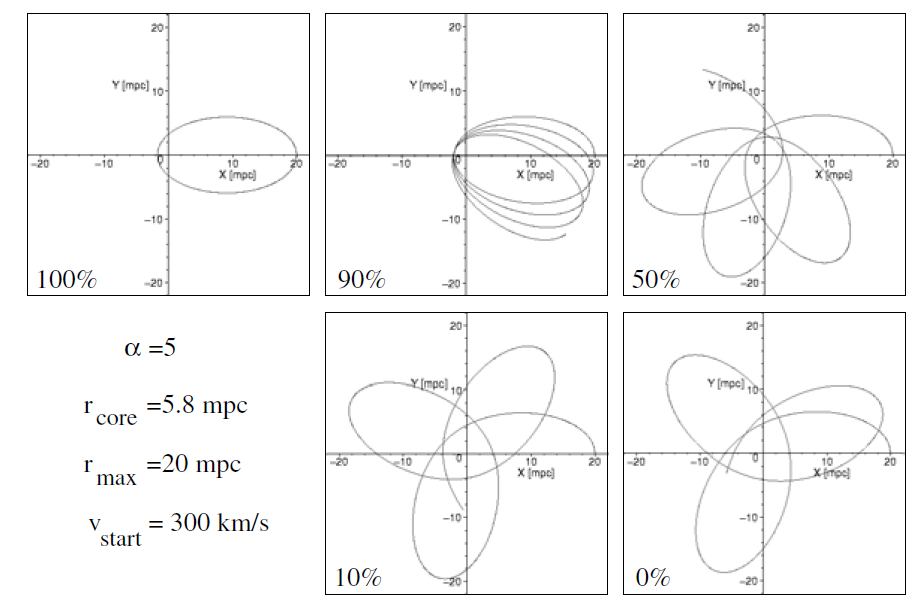
Is there an infrared counterpart of Sgr A∗?
 المؤلف:
Heino Falcke and Friedrich W Hehl
المؤلف:
Heino Falcke and Friedrich W Hehl
 المصدر:
THE GALACTIC BLACK HOLE Lectures on General Relativity and Astrophysics
المصدر:
THE GALACTIC BLACK HOLE Lectures on General Relativity and Astrophysics
 الجزء والصفحة:
p 240
الجزء والصفحة:
p 240
 5-2-2017
5-2-2017
 1588
1588
Is there an infrared counterpart of Sgr A∗?
Menten et al (1996) have identified five H2O/SiO maser stars within the central 20'' of Sgr A∗ and the position of the radio source Sgr A∗ to within about

Figure 1.1. A simulation of how the central 1'' × 1'' of the Milky Way would be seen in 2000 with the LBT interferometer at a wavelength of 2.2 μm. Some of the fast moving stars are labeled. Given the large instantaneous field of view over which the high LBTI resolving power can be achieved the motions of the inner fast moving stars (σ1dim. ∼ 400 km s−1) can be referenced precisely to a large number (a few hundred objects with mK < 14) of much slower (σ1dim. < 100 km s−1) late-type stars in the central stellar cluster. A close-up view of the LBTI PSF is show in the top right-hand image.
±30 mas. It is located within the central stellar cusplike cluster. In 1994, 1995 and March/April 1996 it did not coincide with any of the ≈15mag sources therein. However, in the SHARP June 1996 and the July 1997 data there is evidence for an additional source between S1, S2, and S3 right at the radio position of Sgr A∗. In the diffraction-limited SHARP maps taken with a 50 mas and a 25 mas pixel scale this source manifests itself as an extension of S1 toward S2 (Genzel et al 1997). In the high SNR (resulting from a combination of several tens of thousands of frames) ∼70 mas FWHM maps presented in Genzel et al (1997) the additional source is clearly separated from S1, S2, and S3. This object may represent the best candidate for the long-sought NIR Sgr A∗ counterpart.
In October 2000 the X-ray source at the position of Sgr A* underwent a large-amplitude X-ray flare and a weaker flare in September 1999 (Baganoff et al 2001a, b). In addition a cm-radio periodicity of 106 days was established from VLA data covering the past 20 years (Zhao et al 2001). Theoretical models (Markoff et al 2001) predict a flare K-magnitude between 8 and 13 about 0.5-7 magnitudes brighter than the stars in the 1'' diameter Sgr A* cluster. Such a burst could explain the possible NIR counterpart that was reported by Genzel et al (1997). A new extended Chandra exposure was be carried out in May 2002

Figure 1.2. Possible stellar orbits if only the fraction of mass given in the panels is contained in a central unresolved object. The fraction not contained in such an object is here assumed to have a core radius of 5.8 mpc and a Plummer mass distribution with an exponent α = 5. The stars were launched perpendicularly to the radius vector in the plane of the sky with a velocity of 300 km s−1 at a distance of 20 mpc from the center (Rubilar and Eckart 2000).
showing more flares. Simultaneous observations at radio to infrared wavelengths will help to teach us more about the possible emission mechanisms associated with bursts and quiescent emission of Sgr A*.
 الاكثر قراءة في الثقوب السوداء
الاكثر قراءة في الثقوب السوداء
 اخر الاخبار
اخر الاخبار
اخبار العتبة العباسية المقدسة


